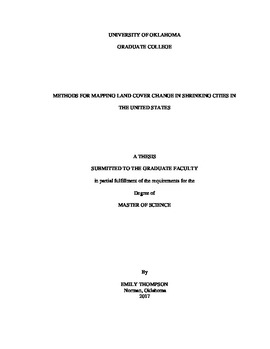| dc.description.abstract | Urbanization is generally understood as the process of growth in both population and developed areas. However, this perception is not entirely reflective of the types of change that are occurring in the heart of the United States. The Rust Belt region of the United States was once the beacon of industrial power, but today is riddled with shrinking cities that have experienced a dark modern history laced with loss of industrial economies, drastic declines in population, and crippled governments. Residential and commercial properties in these cities have been prone to high rates of abandonment, decay, and demolition. While much of the research surrounding these shrinking cities focuses on socio-economic effects, few studies have investigated the physical artifacts of drastic population loss in the United States. This research aims to contribute to the growing body of shrinkage research by examining two cost-efficient methods of monitoring the fast removal of buildings in the Rust Belt shrinking cities of Detroit, Michigan and Youngstown, Ohio. This goal is achieved through the use of a range of different data sources: Light Detection and Ranging, aerial orthoimagery, and GIS datasets all of which are publicly available. We map a 5-year change in Detroit as well as a 10-year and 19-year change in Youngstown to provide, in high detail, an example of how publicly available geospatial data can be applied to identify change in the urban landscapes of the American Rust Belt. The methods used are reproducible and ideal for municipalities that are aiming to monitor building removal in a cost-efficient manner. | en_US |
